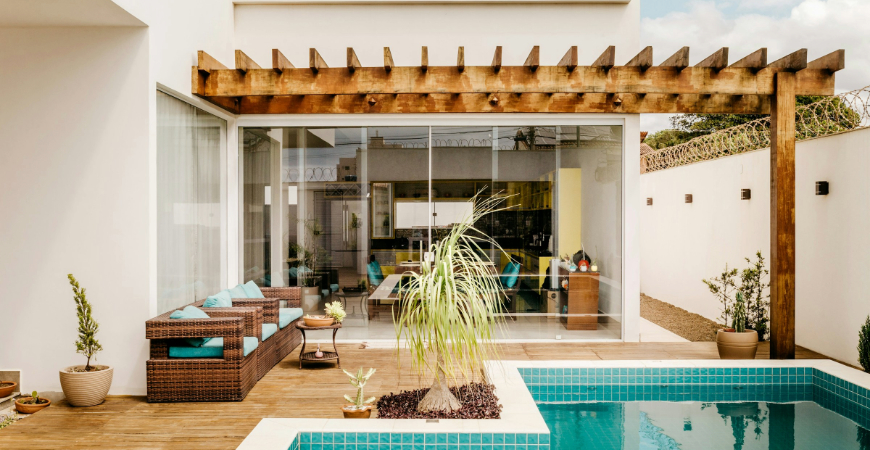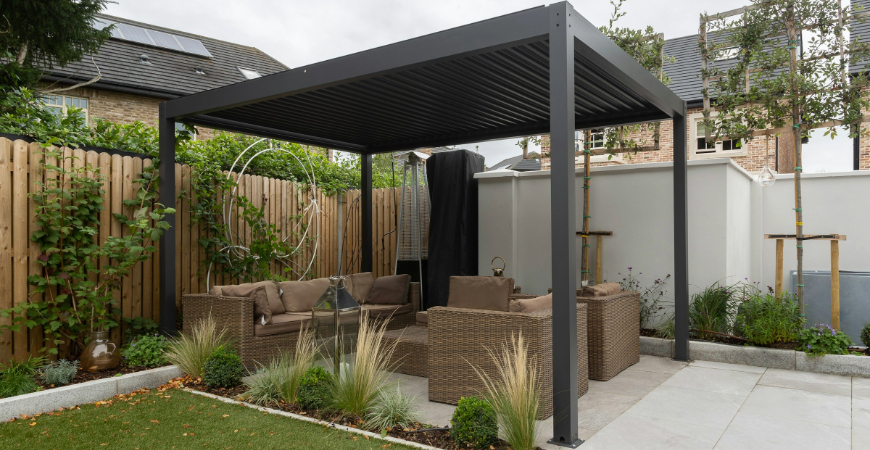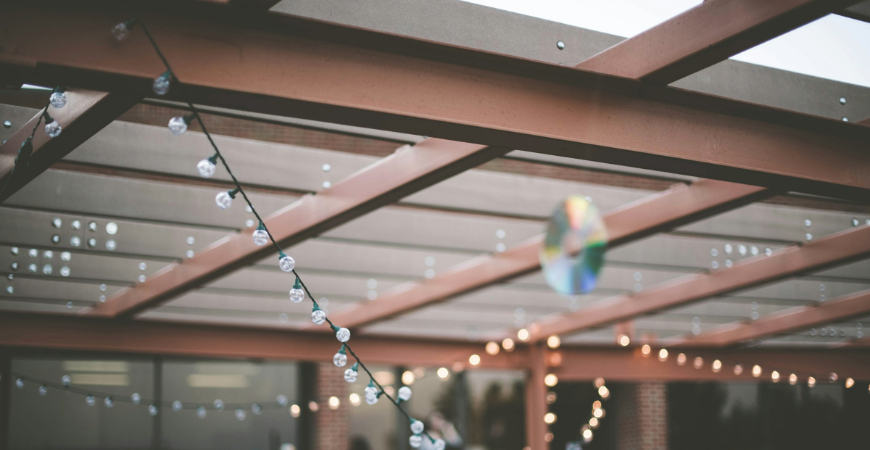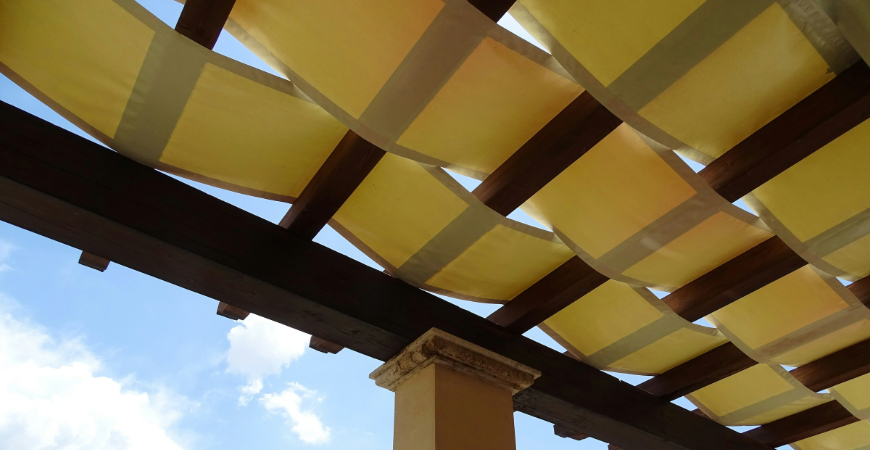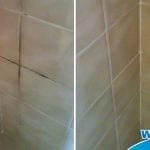
Upgrade Your Backyard with a Pergola
If you’re looking to transform your backyard for this upcoming sunny season, add a pergola. Pergolas are versatile outdoor structures that can fit into even more moderately sized yards.
So, whether you’re pergola-curious or already imagining yourself lounging in this open-air sanctuary, we’ve got you covered. Just check out our guide to upgrading your backyard!
Why Does Your Yard Need a Pergola?
Before launching into budgets and design strategies, it might help to pin down what exactly a pergola is. You may hear people refer to pergolas and gazebos interchangeably, for instance, but we should be clear that there are subtle but essential differences.
Pergolas are outdoor installations. They tend to be constructed of four pillars that hold a slatted or latticed roof.
You’ll see pergolas that are free-standing and ones attached to an existing structure, like a house. They tend to be open-air, but you can fit them with waterproof roofs (and we’ve got plenty of pergola roof ideas below), retractable awnings, and other blockers of the natural elements.
Beneath the roof of the pergola, you’ll typically find outdoor lounge furniture. These charming patio additions are ideal places to host barbecues and other gatherings — or for a relaxing afternoon outside.
Since they are open-air and can be attached to existing structures, pergolas also tend to look less out of place in small or moderately sized backyards. So, if a gazebo would look out of place in your yard, consider a pergola instead.
Pergolas also serve a purpose beyond their function. Their pillars and slatted roofs offer a blank canvas on which you can add hanging plants and crawling vines.
Besides plant greenery, pergolas can also put some green in your pocket when the time comes to sell your home.
Should You Buy or Build a Pergola?
If you’ve already got dreams of pergolas percolating in your head, it’s time to discuss the benefits of buying a prefab pergola kit or getting one custom-built. There’s also a third option where you can purchase the designs for the structure online but then go to your local home renovation store to find the appropriate materials.
For most people, the decision to buy or build comes down to two things: cost and ability. The price of a pergola will come down to the materials used, the size, and the additional features.
Because pergolas are so straightforward, they can seem like a suitable DIY project. However, that apparent simplicity can be deceptive — pergolas need to be anchored to pavers, structurally sound, and capable of holding up to strong winds and rain.
That doesn’t mean you shouldn’t tackle it as a DIY project, but you should be prepared to understand all aspects of installation. Even something like figuring out how to anchor a pergola to pavers requires at least a basic understanding of structural design.
When you take all that into account, the cost of a pergola can range from several hundred dollars to low five figures.
If you go the DIY route, all you’ll have to do is pay for a prefab kit. As we mentioned, you can also buy a design plan and purchase the raw materials yourself.
This tends to be the least expensive route, as you don’t have to pay for labor. However, the costs can escalate depending on the materials and size.
If you’re hiring a professional, you can expect to pay at least $500 just for labor. Like with prefab kits, the cost will start to rise as you add customizations or use more expensive materials.
How Do You Decorate a Pergola?
Whether your pergola is made of aluminum, vinyl, or wood, you’ll likely want to decorate the structure. The classic option here is hanging or crawling plants.
We’ve discussed some of our favorite climbing plants before, and that’s a good place to start. These plants can add a pop of color, reinforce that outdoorsy feel, and give off the scents of spring and summer.
Vining plants are also great when you don’t want to keep the roof’s open-air quality but still yearn for some additional shade. For example, wisteria or sweet pea plants can be trained to climb pillars and grow around the slatted roofs.
Crawling plants often require some maintenance to keep growth controlled, but they tend not to be super finicky. So, you shouldn’t feel intimidated by using plants to decorate your pergola.
How Do You Illuminate a Pergola?
Some design components also serve a functional purpose. For example, string lights can help illuminate the space when the sun takes its respite for the night.
We especially like the idea of hanging lantern-style string lights.
If you’re wondering how to hang these lights on a pergola, we recommend running a metal tension wire between the structure’s pillars and securing it with screws. You can then use cable ties to hang each lantern light from the tension wire.
For added mood lighting, consider using multi-color bulbs.
What Are Some Pergola Roof Ideas?
The final functional design touch for a pergola is its roof. There are a variety of pergola roof ideas, including waterproof roof ideas, out there that can help protect you from intense sunshine and precipitation.
While it will add to installation costs, a retractable awning or roof color gives you flexibility to meet your needs. On warm, sunny days you can keep the roof retracted, and when you feel that first raindrop, go ahead and extend the roof to keep yourself dry.
If you don’t want to deal with the added costs of a retractable roof, there are other pergola roof ideas to try out. Weaving canvas or a waterproof fabric through the beams in the slatted roof can provide additional protection without losing air circulation.
For more pergola roof ideas, see some of Bob Vila’s suggestions.
How Do You Clean a Pergola?
Pergolas aren’t always the most long-lasting structure. However, an effective way to extend their life is to keep them clean.
If you have vines climbing the structure, this task can be a little tricky. At the same time, the plants can also provide a barrier that keeps some stains and unwanted growth at bay.
If your pergola is plant-free, you can clean up moss, mold, mildew, and algae stains with Wet & Forget Outdoor. Just spray and walk away; the cleaning spray will work with the rain and wind to lift the stains. Most customers don’t see regrowth for up to a year or longer.
The formula is non-acidic and contains no bleach. It’s safe to use on virtually any outdoor surface, including common pergola materials like aluminum, vinyl, and wood — it’s even safe on painted or stained surfaces, too.
You can also apply Wet & Forget Outdoor to outdoor furniture and carpets. For outdoor furniture, simply come back the day after applying and rinse the surface with water before use. Wet and Forget will continue to work with Mothe Nature to clean up your outdoor furniture.
So, it’s an effective, safe, and easy-to-use outdoor cleaner for your pergola and almost anything sitting beneath it.
Give Your Backyard a Boost with a Pergola
Pergolas are versatile outdoor structures that can be built to suit our specific needs. They give you a space to lounge outside, a canvas to reinforce your design aesthetics, and even a boost in your home’s resale value.
So, if you’re looking to spend more time outside this spring and summer, consider a pergola. They’re the ideal upgrade for practically any backyard.

